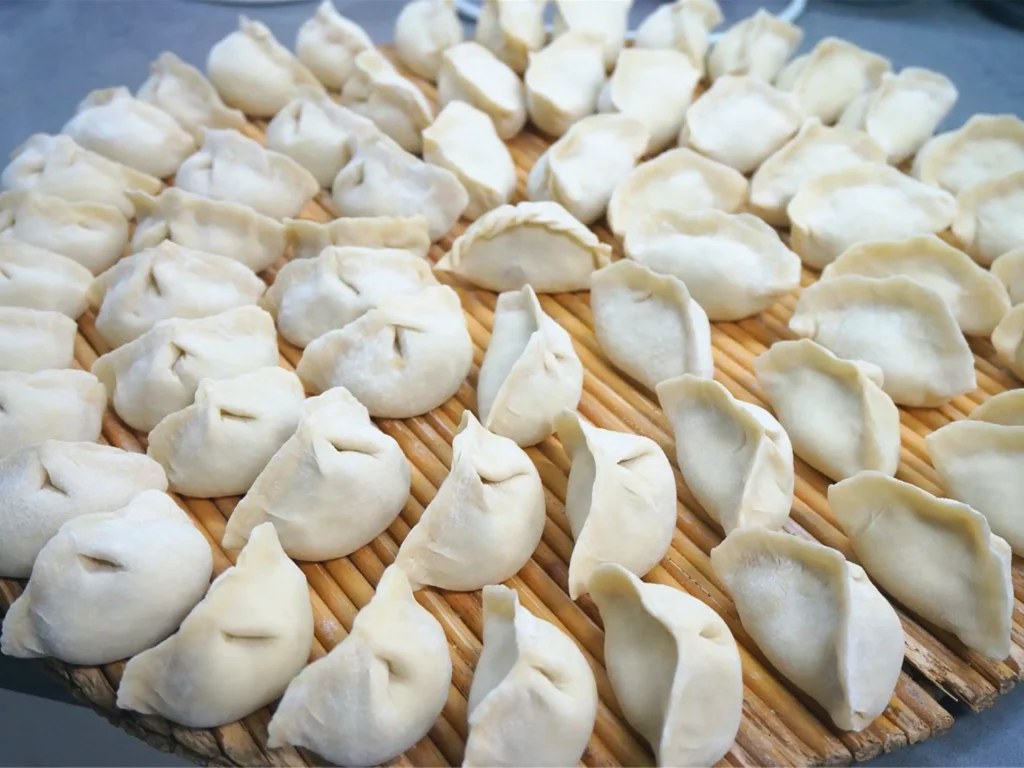在 中国,很 多 人 喜欢 吃 饺子。
English
In China, many people like to eat dumplings.
饺子有很多 种 馅,比如 猪肉、鸡肉 和 蔬菜。
English
Dumplings have many kinds of fillings, like pork, chicken, and vegetables.
有的 人喜欢吃 煮 的饺子,有的 人喜欢吃 煎 的饺子。
English
Some people like boiled dumplings, and some people like pan-fried dumplings.
过年 时,家人 会 一起 包 饺子。
English
During the New Year, families will make dumplings together.
热 热的饺子很 好 吃,也 很 香。
English
Hot dumplings are very delicious and fragrant.
你喜欢吃饺子吗?你 更 喜欢煮的 还是 煎的?
English
Do you like eating dumplings? Do you prefer boiled or pan-fried ones?
语法点 (Grammar Points)
1. 比如 – For example; such as
比如 is used to introduce examples or specific items, similar to saying “for example” or “such as” in English.
文中 (In text):
– 饺子有很多种馅,比如猪肉、鸡肉和蔬菜。- Dumplings have many fillings, such as pork, chicken, and vegetables.
例 (Example):
– 我喜欢 运动,比如 跑步、游泳 和 打篮球。- I like sports, such as running, swimming, and playing basketball.
2. 有的… 有的… – Some… some…
This structure is used to describe different preferences or situations.
文中 (In text):
– 有的人喜欢吃煮的饺子,有的人喜欢吃煎的饺子。- Some people like boiled dumplings, and some people like pan-fried dumplings.
例 (Example):
– 公园里的人很多,有的在 跑步,有的在 散步。- There are many people in the park; some are jogging and some are walking.
3. 更 + Adjective – More…
更 is used to indicate a stronger degree of something.
文中 (In text):
– 你更喜欢煮的还是煎的?- Do you prefer boiled or pan-fried dumplings?
例 (Example):
– 比起 咖啡,我更喜欢 喝 茶。- Comparing to coffee, I like to drink tea more.
4. 还是 – Or (for questions)
还是 is used when offering two or more choices in a question.
文中 (In text):
– 你更喜欢煮的还是煎的?- Do you prefer boiled or pan-fried dumplings?
例 (Example):
– 你想 喝 茶 还是 咖啡?- Do you want to drink tea or coffee?
5. 一起 – Together
一起 is used to indicate that people are doing something together.
文中 (In text):
– 家人会一起包饺子。- Families will make dumplings together.
例 (Example):
– 我和朋友一起去看了 电影。- I went to watch a movie with my friends.


